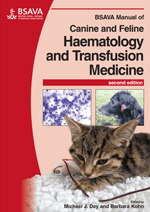
Full text loading...

Leucocytes are inflammatory cells, and the main reason to measure the total white blood cell count and differential white blood cell count, and to evaluate leucocyte morphology, is to determine whether the animal is showing an inflammatory process and, if so, to characterize the severity and other characteristics of that inflammatory response. This chapter covers technical aspects; leucocyte pools; leucocyte responses in inflammation; non-inflammatory causes of leucocytosis; nucleated erythrocytes; leukaemia and drug treatments.
Disorders of leucocyte number, Page 1 of 1
< Previous page | Next page > /docserver/preview/fulltext/10.22233/9781905319732/9781905319732.12-1.gif

Full text loading...


